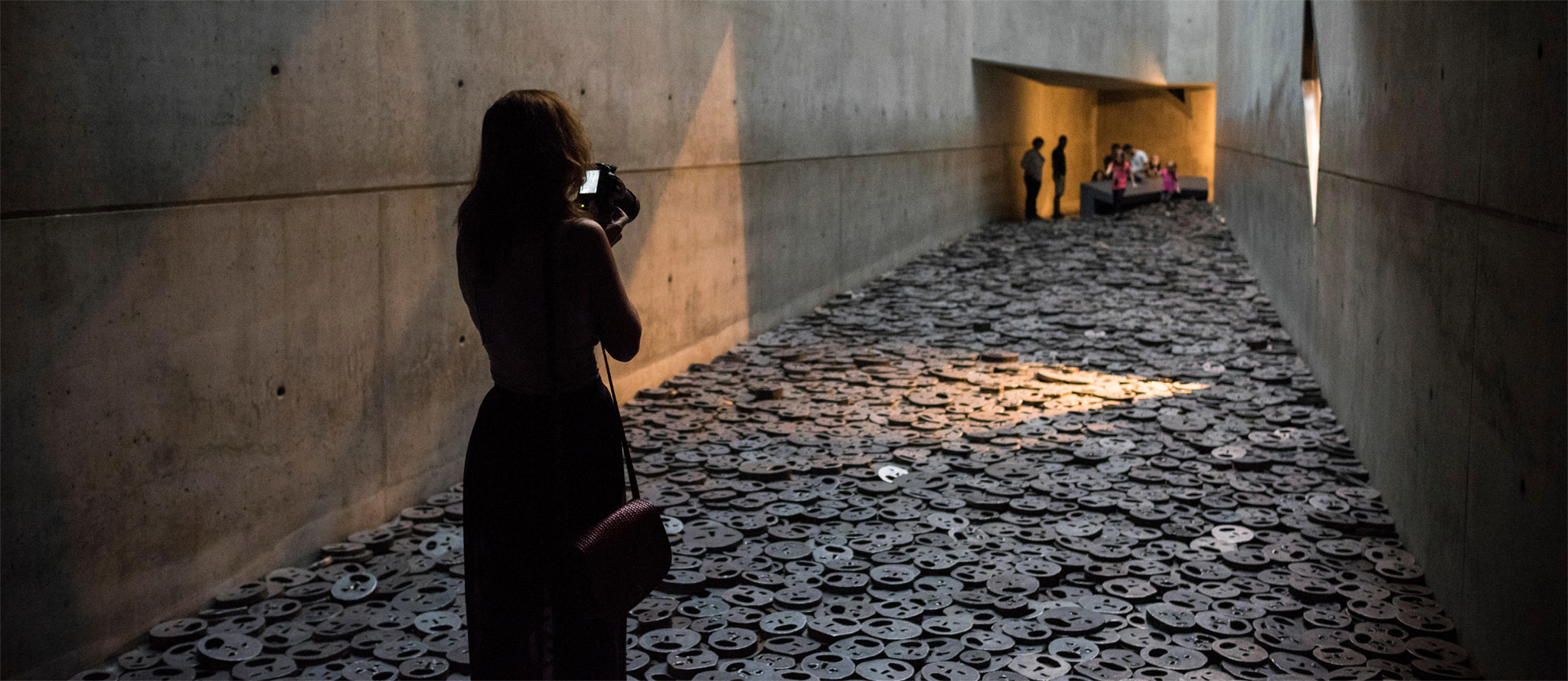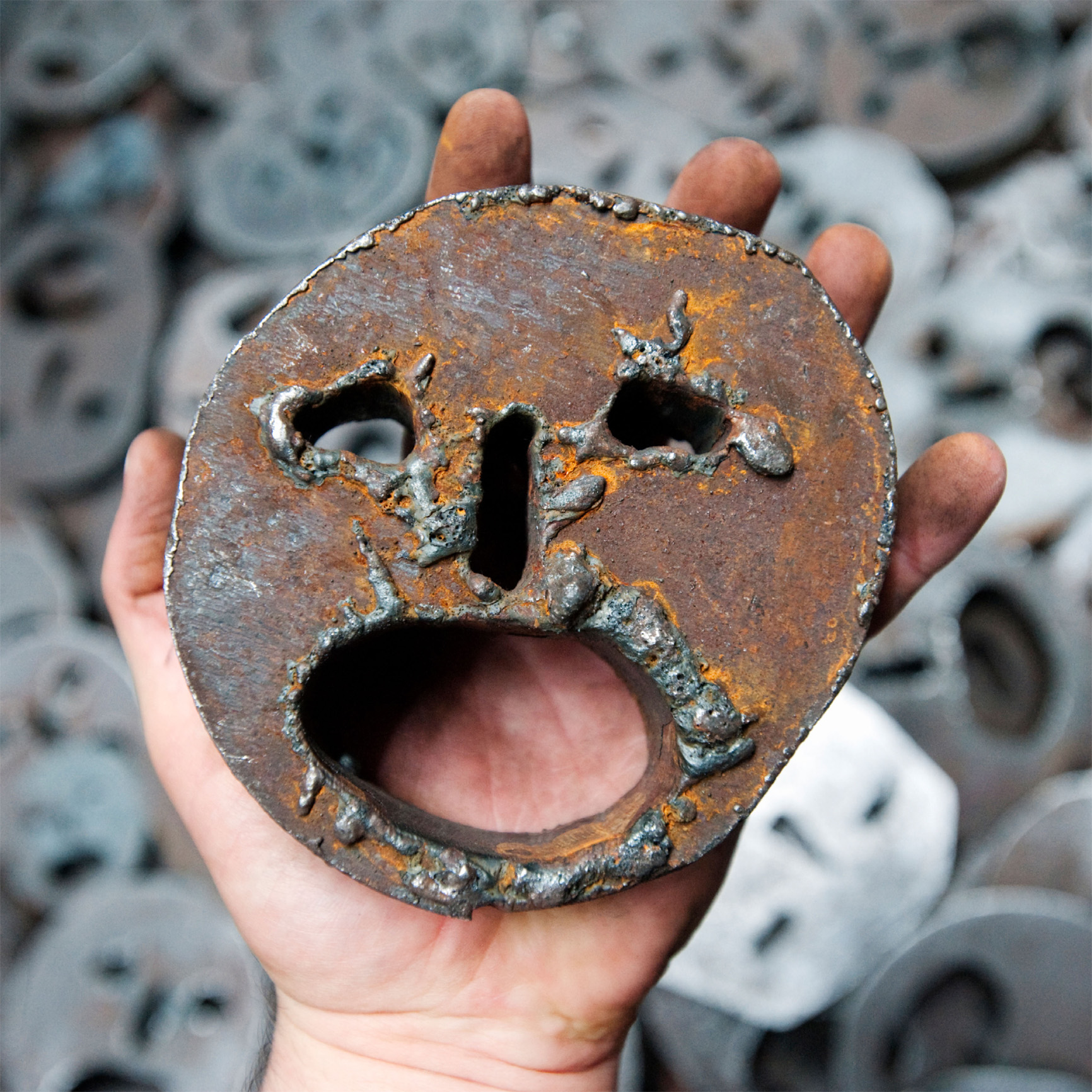
t Iron plate faces cry up at visitors where they lie discarded on the floor in Menashe Kadishman’s Shalekhet installation

t Iron plate faces cry up at visitors where they lie discarded on the floor in Menashe Kadishman’s Shalekhet installation
Experience Kreuzberg

t Iron plate faces
Designed by Daniel Libeskind, a Polish-Jewish architect based in the United States, the museum complex is an exciting and imaginative example of late 20th-century architecture. The complex contains a library and gardens, but the highlight of the museum is the Libeskind Building, whose shape, style and interior arrangement are part of a philosophical programme to illustrate the history and culture of Germany’s Jewish community, and the repercussions of the Holocaust. The long, narrow galleries with slanting floors and sharp zigzagging turns are designed to evoke the feeling of loss and dislocation. These are interspersed by “voids” that represent the vacuum left behind by the destruction of Jewish life.
Entrance to the main museum (the Libeskind Building) is via an underground tunnel. The exhibition is div ided into 14 sections, taking visitors through German Jewish history and culture from early history up to the present day.